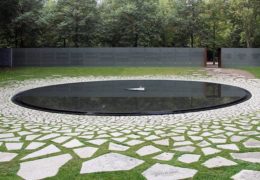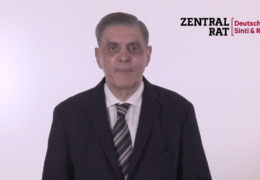The Central Council of German Sinti and Roma recognizes the necessity of the construction project for the new S-Bahn line, which is important for the infrastructure and for millions of people in Berlin. Sinti and Roma, with their 600 years of German history, are a natural part of this country. It is therefore important for the Central Council that a solution for the S21 has been found together with the Berlin Senate and the responsible Senator Mrs. Schreiner in the interests of all people of Berlin.
The Chairman of the Central Council of German Sinti and Roma, Romani Rose, thanks the Berlin Senate for answering some of the open questions posed by the Central Council and for taking up its suggestions. At the request of the Central Council, the Berlin Senate presented the 15 planning options and other sub-versions that were under consideration and carefully documented and explained the exclusion and consideration criteria to the Central Council.
Romani Rose explains: “I already contacted the Governing Mayor on December 18, 2023, with the request to document in a way that is comprehensible to the entire Berlin public why variant 12h, which concerns the memorial to the Sinti and Roma murdered under National Socialism, remained the only feasible route in the review process.”
The Senate resolution of 19th December 2023 on the planning approval procedure opens the formal review and approval process, during which the questions that remain open for the Central Council are to be clarified in a dialog, as the Senate promised.
“It is not yet sufficiently clear from the planning documentation to date which open space planning measures will be taken during the construction phase and to what extent the monument realized by Dani Karavan will be returned to its original state after the construction work. Berlin’s transport Senator Schreiner has promised to restore the monument to its original state,” says Romani Rose.
In a letter to the Central Council in February 2021, Dani Karavan signalled his willingness to find a solution for the planned construction measures. He considered relocating the access shaft below the memorial if it is ensured that the ceremony of the daily changing of the wildflower in the centre of the memorial can continue without interruption and if the memorial is fully restored.
“The Central Council of German Sinti and Roma held many discussions and negotiations with politicians for 20 years until the memorial to the Sinti and Roma of Europe murdered under National Socialism could finally be handed over to the public in 2012. This memorial of the Federal Republic of Germany commemorates the genocide of 500,000 Sinti and Roma in Nazi-occupied Europe and expresses the responsibility of our state and our entire society to counteract today’s antigypsyism based on the experience of this history through the democratic constitutional state,” explains Romani Rose.
“The Central Council thus also opposes the claim of some members from the campaign alliance ‘Our memorial is untouchable’, who justify their demand with the fact that the murdered victims of the Nazi regime rest under the memorial. It is places like Auschwitz, Treblinka, Dachau, and many others that have become the largest cemeteries in Europe for our minority. In addition, after the second world war, most survivors laid graves for their murdered family members in the local cemeteries of their home communities in memory and remembrance,” said Romani Rose.


